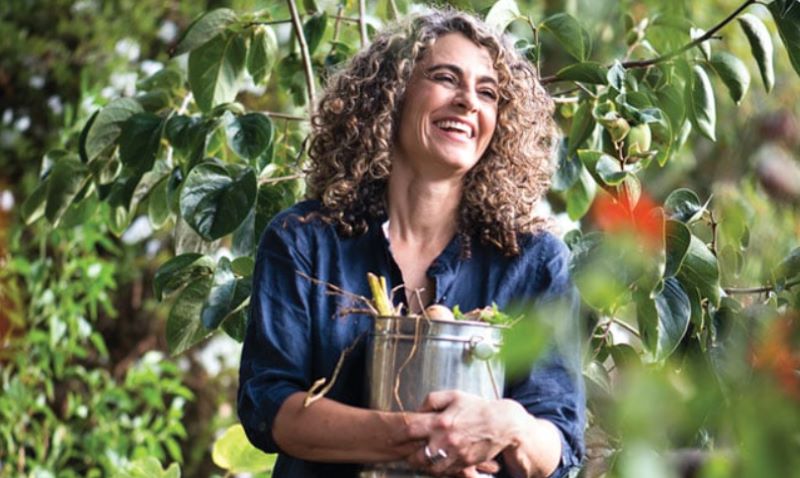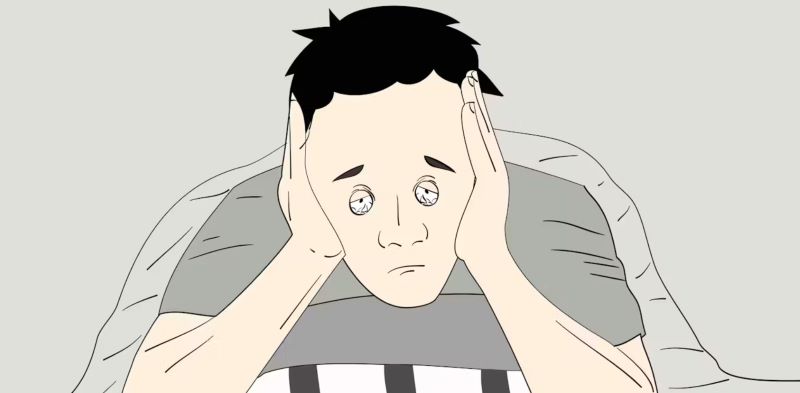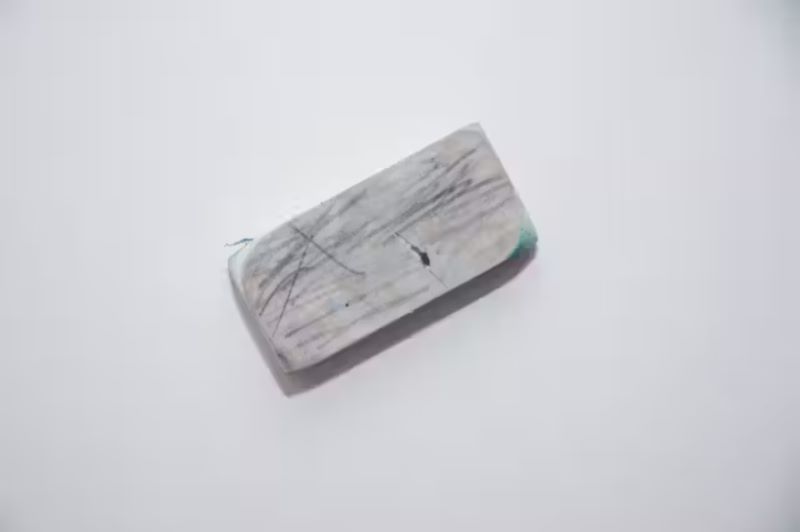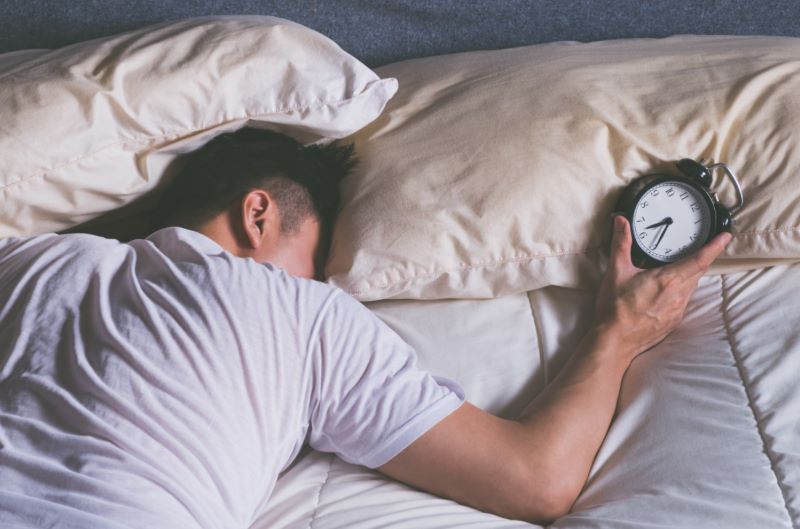
Why are anxiety and depression on the rise? Our environments have changed. Our food. Our stress. Our relationships—our “lost connections.”

By Travis Lupick
Author and award-winning journalist
Johann Hari’s experience with depression is something of a lightning rod within mental health circles. Some cheer his nuanced views of the disorder, grateful for a take on mental health that emphasizes the impacts of environment and experience. Others argue that the British journalist is too dismissive of medication. “Is everything Johann Hari knows about depression wrong?” reads a headline that ran in a U.K. newspaper.
The extreme reactions to the best-selling author of Lost Connections: Uncovering the Real Causes of Depression—and the Unexpected Solutions also speak to the binary way people tend to view mental illness and mental health. You either have it or you don’t.
Nearly 50 percent of people in the U.S. will experience a mental health disorder at some point in life. Every single person, every day, passes through the continuum that is mental health, from building resilience to dealing with challenges such as anxiety and depression to recovering from trauma to living with severe disorders that need constant medical care.
When Hari was a teenager in the 1990s, he felt a debilitating sadness that he couldn’t explain or even understand. “My doctor told me a story that was entirely biological. He said, ‘We know why people feel this way. There’s a chemical called serotonin in people’s brains. Some people lack it, you’re one of them, and all we need to do is drug you and you’ll be fine.’”
Paxil, a selective serotonin reuptake inhibitor, or SSRI, corrected the serotonin imbalance in his brain that was causing him to feel sad. Hari says his mood improved. But, he learned a few months later, it only worked for a while. Then the sadness returned. His dose was increased, feelings of melancholy receded, but again only for a time. A pattern set in and continued for years.
When he was researching Lost Connections, Hari says, he began to understand the roots of his depression and discovered lasting solutions to the mental health challenges with which he had struggled for so many years.
Social stress. Lack of community. Childhood trauma. “It was a combination of social factors,” he says. “Growing up in a culture where you’re taught that what matters most is money and status. Growing up in a place with no community. … And I’d gone through childhood trauma, and childhood trauma can lead to adult depression.” With a fuller picture of his mental health, Hari realized he focused too much on himself and self-promotion. He began making a conscious effort to spend time helping others “and to just be present with the people I love,” he adds.
“Really, it was a radical transformation.”
The personal story Hari recounts in Lost Connections reveals emotional well-being as significantly more complicated than a binary system that oscillates between resilience and illness.
“There are three different kinds of causes of depression, and we’ve been focusing way too much on the biological ones and not anywhere near enough on the social and psychological ones,” Hari says.
This broader understanding of mental health—as a continuum, and one that is deeply and continually affected by environment, circumstance, and experience—is further revealed in the many statistics repeated after the suicides in June of celebrities Anthony Bourdain and Kate Spade. A June report by the U.S. Centers for Disease Control and Prevention shows that from 1999 to 2016, suicide rates have steadily increased in nearly every state to create a national rise of 30 percent. “In 2016, nearly 45,000 Americans age 10 or older died by suicide,” it reads. “Suicide is the 10th leading cause of death and is one of just three leading causes that are on the rise.”
What has happened to Americans over those decades? Thinking that biological chemistry alone has undergone significant changes is unreasonable. Our environments have changed. Our food. Our stress. Our relationships—our “lost connections,” as Hari puts it.
According to the Cooperative Institutional Research Program’s annual Freshman Survey, in 1985, 18 percent of first-year college students said they “felt overwhelmed.” In 2000, that number was 28 percent. In 2016, it was 41 percent.
The portion of American children ages 6 to 17 who experience a lifetime diagnosis of anxiety or depression was 5.4 percent in 2003 and 8.4 percent by 2011–2012, according to an April 2018 paper published in the Journal of Developmental and Behavioral Pediatrics. “Youth mental health is worsening,” reads a blunt assessment by Mental Health America. According to the nonprofit, the rate of youth with “severe depression” increased from 5.9 percent in 2012 to 8.2 percent in 2015.
As troubling as these numbers are, a small positive exists. If mental health challenges are so common, if we are all at various stops on the continuum of resilience to illness, no one should feel ashamed for experiencing one.
A Normal Response to Abnormal Circumstances
There’s another takeaway, too. If we are all in this mental health thing together, then each of us in the wider community plays a large role in prevention and healing.
In 2008, Dr. Gabor Maté published In the Realm of Hungry Ghosts: Close Encounters With Addiction, a seminal book on the subject that explains problematic drug use as a common response to childhood trauma. Or, as he explained addiction in a recent interview, “a normal response to abnormal circumstances.”
“Just about every mental affliction is actually an adaptive response that then becomes a source of problems later on,” Maté says. “People push down their feelings in childhood when the environment of their childhood cannot receive those feelings. In order to stay acceptable to the nurturing environment, the child pushes down their feelings. Thirty years later, they are diagnosed with depression.”
Maté is working on a book that’s tentatively titled The Myth of Normal: Pathways to Health in an Insane Culture. “A society that erodes communities and isolates people, which this society does in major ways, that itself is going to create insanity,” Maté says. “That is insanity.”
To explain, he takes a step back in time: “We evolved as communal creatures,” Maté says. “We could not have survived on our own [in prehistoric times]. No human being could have survived.”
Imagine a small tribe of indigenous people living in Central America some 2,000 years ago. Positive feelings of community kept humans in groups large enough to foster collective security. Now think of the ways so many of us live today: in 30-story apartment towers where introducing yourself to your neighbors has become a social oddity, and in gated communities where massive parcels of personal property keep families in geographic isolation from those nearby.
Maté’s reference to premodern humans is reminiscent of the work of John Cacioppo, a social neuroscientist at the University of Chicago who dedicated his life to the study of loneliness. He established that “negative” emotions such as loneliness were actually necessary to our success.
“Meaningful social connection, and the pain we feel without it, are defining characteristics of our species,” Cacioppo wrote in his 2008 book, Loneliness: Human Nature and the Need for Social Connection. “In the same way that physical pain serves as a prompt to change behavior—the pain of burning skin tells you to pull your finger away from the frying pan—loneliness developed as a stimulus to get humans to pay more attention to their social connections, and to reach out toward others, to renew frayed or broken bonds.”
In Central America 2,000 years ago, a solo hunter with pangs of loneliness would return to his tribe, to relative physical safety, and to a comforting feeling of belonging in his community. Today, in a society that encourages isolation, it’s as if we’re forgetting that sort of solution is still available to us.
Depression Is Political
Of course, it’s not that simple. The relationship between community and an individual’s mental health is complicated. And political. Sometimes you’re White and feel capitalism is isolating and making you depressed. Sometimes you’re Black and afraid for your teenage son to leave the house wearing a hoodie.
“I am here sitting in my bed fighting my depression, trying not to bask in somberness for too long, pondering how I’m going to shatter ceilings with three generations on my back,” wrote Bobby London, a writer and journalist who often covers social movements including Black Lives Matter, in a 2015 essay, “Depression Is Political.” “Depression is, at least for me, something that is structurally created,” she continues. “I am depressed because I live in a White-supremacist, patriarchal, capitalist world. I am depressed because people that look like me are constantly being murdered.”
The politics of depression and anxiety at the community level looks like this:
According to a June study published in the Lancet, police killings of unarmed Black people harm the mental health of the victims’ entire communities. And researchers noted that the mental health impacts were not observed among White people and resulted only from police killings of unarmed Black Americans, not unarmed White Americans or armed Black Americans.
For several years, Ashley Yates has candidly shared her experiences with depression and anxiety on social media under the handle @brownblaze. She’s also become an advocate for self-care and for dialogue around the mental health challenges that are especially pronounced in communities of color, from violence to invisibility.
“The ways in which we are treated when we access social services is completely different from other races. The ways in which we are treated in our health care system is completely different from other races,” Yates says. “It is really stressful. It creates depression … when you know that you are going to have to fight doubly or triply hard just to get normal care, just to get your necessities, just to be seen.”
In August 2014, 18-year-old Michael Brown was shot and killed by a White police officer in Ferguson, Missouri. It was one of several fatal police shootings that collectively gave rise to Black Lives Matter and a re-energized movement for civil rights. In Ferguson, Yates participated in protests for police accountability for several months. She recounts how she became a part of something in which she found strength but which paradoxically presented simultaneous challenges for her mental health.
“Dealing with that sort of repression, dealing with that sort of violence—the only thing that I can think to compare it to is active warfare. You are having war waged against you by your government,” she says.
Yates remembers that she first scoffed at the idea she would experience post-traumatic stress disorder. “I don’t know if it was cognitive dissonance or just ignorance on my part, but I had no clue that it would impact us so deeply. But every single person that spent significant time in Ferguson absolutely suffers from PTSD.”
Yates didn’t always speak so openly about mental health. “At first, it was definitely like, ‘Will I be stigmatized?’ And there was stigmatization,” she says.
Then a comrade killed himself.
In February 2016, MarShawn McCarrel, 23, a prominent member of the Black Lives Matter movement, shot himself on the steps of the Ohio statehouse. “It told me that it was time to speak out no matter the cost,” Yates says.
At the same time, Yates began a conscious effort to take better care of herself, which she says was not easy. “There are a lot of barriers when it comes to access to therapy or mental health services for Black people,” Yates explains. “Coming from a Southern Baptist religion, there is not a lot of space for me to do something other than to take it to Jesus. And so that was a huge barrier that I had to overcome. Another one was cost and insurance and all of the things it takes to find a therapist who understands racism and structural inequity.”
Yates began with small steps she describes as “accessible” and “affordable.”
“Finding my joys in life was a huge thing,” she says. “Something that happens a lot in activism is that people forget we have lives outside of it. We forget to do pleasurable things. So for me, it was getting back to writing, getting back to drawing, getting back to reading, getting back to just seeing a movie sometime, and remembering that we live full, well-rounded lives. Those were some of my very first steps.”
Yates also reconceptualized her mental health as more nuanced than either “unhealed” or “healed.”
Because she had so much trauma, she says, a state of “healed” seemed impossible. “But when I remembered that healing is a process … it became a more tangible reality, and something that is a lot more feasible than flipping a switch.”
Sometimes People Get Stuck
Recovery from an oppressive situation takes time, according to Dr. Bessel van der Kolk, author of The Body Keeps the Score: Brain, Mind, and Body in the Healing of Trauma. He is a clinician and researcher who specializes in post-traumatic stress and is founder of the Trauma Center in Boston. Van der Kolk says that for a child living in an abusive household, for example, or a person of color who has repeatedly experienced unjustified interactions with police, healing will be a process, and often a long one.
“People adapt to very bad situations,” he explains. “The response to trauma is the mind’s way of coping with whatever is going on, to help you to survive. But sometimes people get stuck.”
At the Trauma Center, van der Kolk and his team make less-traditional treatments available alongside mainstream therapies. A child can play a video game that promotes neural feedback, for example, where they interact with a visual representation of their own brainwaves to relieve anxiety and promote a better mood. There’s trauma-sensitive yoga that promotes self-awareness of the relationship between body and mind.
Van der Kolk also emphasizes the powerful role of community both to harm and to heal.
“Trauma is, in many cases, about a breakdown of community,” he explains. “If the very source of protection becomes a source of danger, that is really very bad for people. The community is protective, but if the community turns against you, we become very vulnerable.”
He recounts how the significance of community healing became clear to him during work for South Africa’s Truth and Reconciliation Commission, which was convened in 1995 to help heal the wounds of apartheid.
“After a collective trauma has happened, people tend to sing and move and dance and eat,” he says. “None of that is incorporated into [North American] mental health systems, but most of us who have worked with other cultures, or who have worked with refugees, see how much comfort people get from singing, moving, and dancing. … Songs and communal sounds that we make let us feel at one with the people around us and are very powerful, very comforting ways of re-establishing connections with human beings.”
A Life-Saving Connection In Community
In an impoverished neighborhood of Vancouver, British Columbia, called the Downtown Eastside, the Vancouver Area Network of Drug Users is a sort of union that advocates for drug policy reform, operates harm-reduction programs such as needle exchanges, and gives drug users a voice in Canadian politics.
Hugh Lampkin is a board member, former president of the organization, and a prominent community activist who’s taken a lead role through VANDU in Canada’s response to North America’s epidemic of drug overdose deaths. For Lampkin, a drug user himself, the road to helping others has been a journey, one that began with childhood trauma. “I grew up in Toronto,” Lampkin begins. “I always had issues, being a person of color. I used to get beaten up a lot and chased around by other kids who were White.”
A number of incidents of abuse led him to self-medicate with heroin and other drugs. “It allowed me to shut myself off, to not feel anything,” he says.

“I didn’t feel I had any sort of connection with anybody,” he remembers.
After nearly three decades lost to drugs, Lampkin traveled across the country to Vancouver. “I didn’t want to be around my family and friends, because I understood that I was going to make them hurt. So I decided to come out here [to Vancouver] to kick off … to off myself.”
Lampkin describes one evening in 2006 or 2007, when he prepared his last meal.
“I went and bought a bottle of 12-year-old Scotch,” he recounts. “It was $180 for the bottle. And a bottle of wine that was $200 or $300. I had prime rib and lobster—surf and turf—with scalloped potatoes. And some dope. And dessert, tiramisu.” Lampkin ate, drank, and then injected the heroin—enough to kill himself, he was sure.
“And then I remember hearing birds chirping,” he continues. It was 13 or 14 hours later, and Lampkin was lying on his apartment floor, exactly where he had fallen the night before. “OK, I’m still here,” he remembers thinking. “It was a relief.”
Shortly after, Lampkin was walking through downtown Vancouver and bumped into a small group of people who were smoking cigarettes outside what looked like a cross between a community center and homeless shelter. “They looked like the sort of people I could hang around with,” he says. “I felt comfortable. I felt at ease.” Lampkin had found VANDU.
“And I’ve been here ever since, with our little clubhouse of losers,” he adds with a smile.
At a subsequent VANDU meeting, Lampkin shared some of what had happened to him as a child. “And there was more support than I had been given my entire life,” he says. “I saw people with tears in their eyes, and there was an acknowledgement. What had happened to me had happened to them.”
Today, nearly 10 years later, Lampkin practically lives at VANDU. He volunteers countless hours, leading training sessions for overdose response, holding meetings on political developments that affect drug users, and generally keeping VANDU’s headquarters running. It’s a supportive, nonjudgmental atmosphere of organized chaos.
What’s kept him there? Lampkin says that in the drug users community he found a home, one where he feels valued and useful.
“I wanted people—somebody, even if only one person—to feel what I felt that day,” he explains. “To give a person someone to talk to without wanting anything from them. To just listen. Because for a lot of people, that’s all they want. For a lot of people, that’s lifesaving.”
If you’re having suicidal thoughts, or know someone who is, call the National Suicide Prevention Lifeline at 1-800-273-8255 (TALK).
Originally published by Yes! Magazine, 08.13.2018, under a Creative Commons Attribution-NonCommercial-NoDerivatives 4.0 International license.






